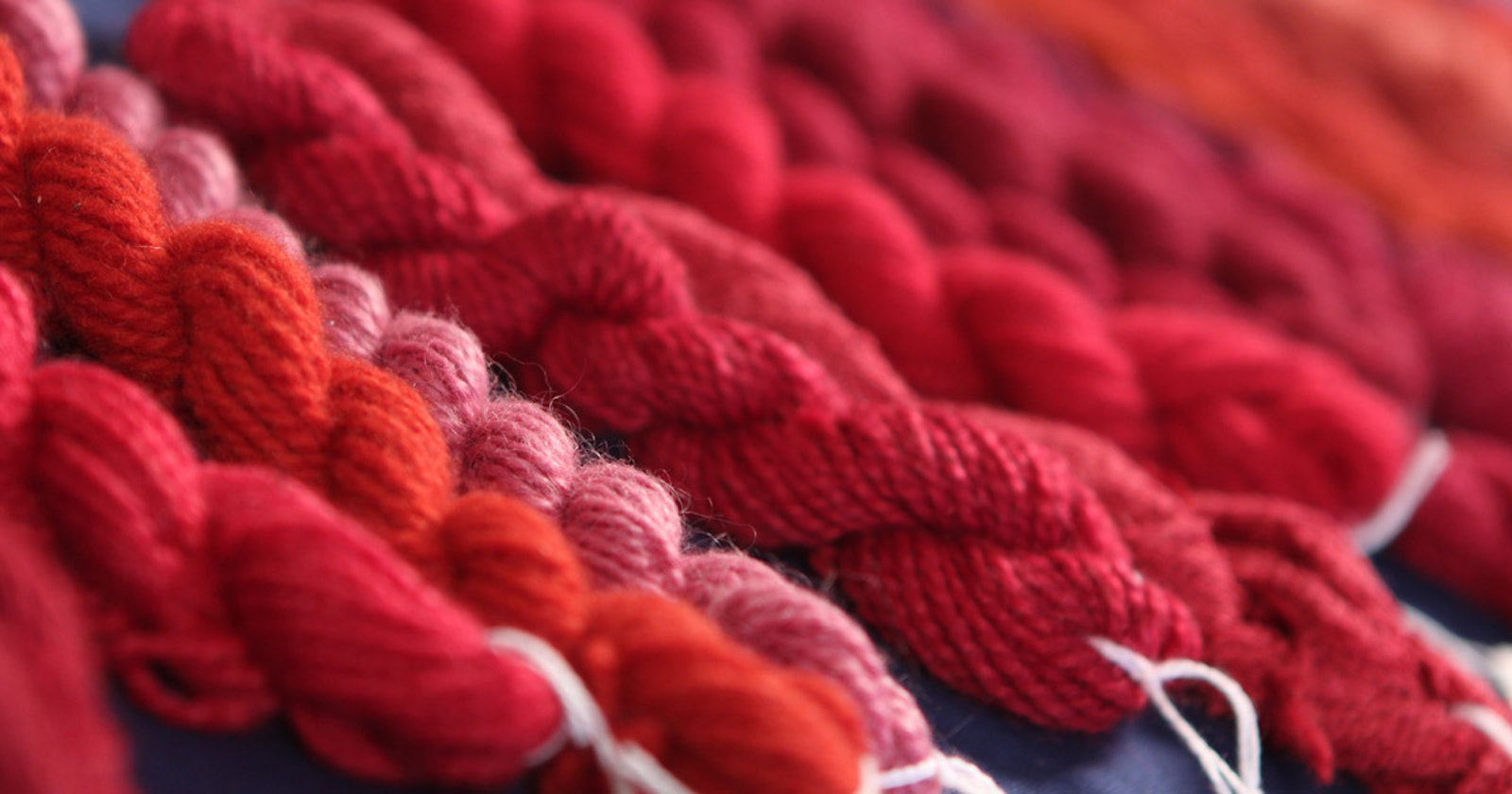In 1856, British chemist William Henry Perkin discovered how to make the first synthetic dye, a purple called mauvine, using coal tar. Before that invention, every color of yarn or fabric got its hue from natural dyes—vegetable, mineral, and yes, even animal. Here are a few favorites that are easy for home dyers to find and use.

Several plants around the world contain the indigo molecule, which yields a beautiful blue if you ask it nicely. Photo by Anita Osterhaug
Indigo
Source: Plant (dozens of species)
Everyone knows indigo, the true-blue color of denim jeans. Natural indigo is one of the trickiest natural dyes to master, but the effort is worth it to get that pale to navy hue.
All natural dye requires some chemistry, but indigo goes through several processes to turn green leaves into blue natural dye. In order for the blue color to come out of the plant and onto your yarn or fabric, it needs to be reduced in an alkaline environment. When you dip something into an indigo dye vat, it comes out green. Exposure to oxygen in the air reveals the blue color.

Artist Rowland Ricketts grows a type of indigo, then uses it to dye artworks such as “I am Ai, We are Ai”. Photo by Rowland Ricketts
Indigo doesn’t require a mordant (a metal oxide) to bind it to yarn, and indigo can dye almost everything: cotton, wool, or synthetic. However, indigo does rub off (called “crocking”). An unusual form of indigo called Saxon Blue works without reduction.

Ground dried insects (top left) produce a stunning red dye.
Cochineal
Source: Insect
The red dye produced by cochineal is also called carminic acid, and you can still find it in use as a food coloring! In places where the nopal cactus grows easily, you may see a white, powdery crust on the pads that marks where cochineal insects live. Their bold red color has sometimes been as valuable as gold.
Prepared with plenty of acid, cochineal gives a scarlet color. If you add some baking soda or another alkali, the color shifts toward hot pink.

The yellow yarn was dyed with Osage orange, and the red came from brazilwood. Photo by George Boe
Logwood, brazilwood, Osage orange, fustic, and more
Source: Trees
Although not as red as cochineal, brazilwood yields a rich, rusty red. Logwood dyes a variety of purple and gray shades, while Osage orange and fustic both create yellow colors. (If you know a woodworker or spindle maker, you may be able to dye with their wood chips.)
—Anne
Pictured in our featured image: changing the pH of the dyebath shifts cochineal from deep purple-red to orange-red. Photo by Interweave.

